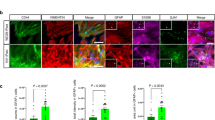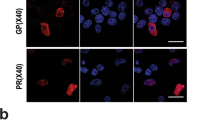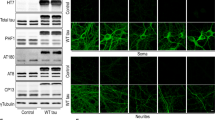Abstract
Accumulation of α-synuclein (α-syn) species in dopaminergic neurons is one of the main hallmarks of Parkinson’s disease (PD). Several factors have been associated with α-syn aggregation process, including an impairment of the proper protein degradation, which might drive the neurons toward an alternative and/or additional clearance mechanism that involves the release of undigested material from the cell. It has been reported that extracellular α-syn, released by stressed and/or degenerating neurons, might widely contribute to the neuronal toxicity and degeneration. Therefore, the uptake and clearance of misfolded/aggregated proteins is a key process to control extracellular deposition of α-syn aggregates, the spreading and progression of the disease. All the main brain cell types, neurons, astrocytes and microglia are able to internalize and degrade extracellular α-syn, however, glial cells appear to be the most efficient scavengers. Accumulating evidence indicates that the endocytosis of α-syn species might be conformation-sensitive, cell- and receptor-type specific, making the scenario highly complex. In this review, we will shed light on the different endocytosis mechanisms and receptors recruited for the uptake and clearance of pathological α-syn forms with a special focus on glial cells. Moreover, we will discuss how PD-related genes, in addition to α-syn itself, may alter the endo-lysosomal pathway causing an impairment of clearance, which, in turn, lead to accumulation of toxic species, dysfunctions of glia physiology and progression of the disease.

Similar content being viewed by others
Abbreviations
- α-syn:
-
α-Synuclein
- PD:
-
Parkinson’s disease
- LB:
-
Lewy bodies
- LN:
-
Lewy neurites
- CNS:
-
Central nervous system
- Snpc:
-
Substantia nigra pars compacta
- AP2:
-
Adaptor protein 2
- TLR:
-
Toll-like receptors
- LAG3:
-
Lymphocyte-activation gene 3
- GCase:
-
Glucocerebrosidase GCase
- pffs:
-
pre-formed fibrils
References
Alegre-Abarrategui J, Christian H, Michele MP, Lufino MM, Mutihac R, Venda LL, Ansorge O, Wade-Martins RR (2009) LRRK2 regulates autophagic activity and localizes to specific membrane microdomains in a novel human genomic reporter cellular model. Hum Mol Genet 18(21):4022–4034. https://doi.org/10.1093/hmg/ddp346
Appel SH, Beers DR, Henkel JS (2010) T cell-microglial dialogue in Parkinson’s disease and amyotrophic lateral sclerosis: are we listening? Trends Immunol 31(1):7–17. https://doi.org/10.1016/j.it.2009.09.003
Aulić S, Masperone L, Narkiewicz J, Isopi E, Bistaffa E, Ambrosetti E, Pastore B et al (2017) α-Synuclein amyloids hijack prion protein to gain cell entry, facilitate cell-to-cell spreading and block prion replication. Sci Rep 7(1):10050. https://doi.org/10.1038/s41598-017-10236-x
Bae E-J, Kim D-K, Kim C, Mante M, Adame A, Rockenstein E, Ulusoy A et al (2018) LRRK2 kinase regulates α-Synuclein propagation via RAB35 phosphorylation. Nat Commun 9(1):3465. https://doi.org/10.1038/s41467-018-05958-z
Baumann N, Pham-Dinh D (2001) Biology of oligodendrocyte and myelin in the mammalian central nervous system. Physiol Rev 81(2):871–927. https://doi.org/10.1152/physrev.2001.81.2.871
Beilina A, Rudenko IN, Kaganovich A, Civiero L, Chau H, Suneil K, Kalia LV, Kalia et al (2014) Unbiased screen for interactors of leucine-rich repeat kinase 2 supports a common pathway for sporadic and familial Parkinson disease. Proc Natl Acad Sci USA 111(7):2626–2631. https://doi.org/10.1073/pnas.1318306111
Bieri G, Gitler AD, Brahic M (2018) Internalization, axonal transport and release of fibrillar forms of alpha-synuclein. Neurobiol Dis 109:219–225. https://doi.org/10.1016/j.nbd.2017.03.007
Booth HDE, Hirst WD, Wade-Martins R (2017) The role of astrocyte dysfunction in Parkinson’s disease pathogenesis. Trends Neurosci 40(6):358–370. https://doi.org/10.1016/j.tins.2017.04.001
Buell AK, Galvagnion C, Gaspar R, Sparr E, Vendruscolo M, Knowles TP, Linse S, Dobson CM (2014) Solution conditions determine the relative importance of nucleation and growth processes in α-Synuclein aggregation. Proc Natl Acad Sci USA 111(21):7671–7676. https://doi.org/10.1073/pnas.1315346111
Cao S, Standaert DG, Ashley SH (2012) The gamma chain subunit of Fc receptors is required for alpha-Synuclein-induced pro-inflammatory signaling in microglia. J Neuroinflamm 9(1):259. https://doi.org/10.1186/1742-2094-9-259
Choi YR, Kang S-J, Kim J-M, Lee S-J, Jou I, Joe E-H, Park SM (2015) FcγRIIB mediates the inhibitory effect of aggregated α-Synuclein on microglial phagocytosis. Neurobiol Dis 83:90–99. https://doi.org/10.1016/j.nbd.2015.08.025
Conway KA, Harper JD, Lansbury PT (1998) Accelerated in vitro fibril formation by a mutant α-Synuclein linked to early-onset Parkinson disease. Nat Med 4(11):1318–1320. https://doi.org/10.1038/3311
Cullen V, Sardi SP, Ng J, Xu Y-H, Sun Y, Tomlinson JJ, Kolodziej P et al (2011) Acid β-glucosidase mutants linked to gaucher disease, Parkinson disease, and lewy body dementia alter α-Synuclein processing. Ann Neurol 69(6):940–953. https://doi.org/10.1002/ana.22400
Członkowska A, Kohutnicka M, Kurkowska-Jastrzebska I, Członkowski A (1996) Microglial reaction in MPTP (1-Methyl-4-Phenyl-1,2,3,6-Tetrahydropyridine) Induced Parkinson’s disease mice model. Neurodegeneration 5(2):137–143
Dehay B, Martinez-Vicente M, Ramirez A, Perier C, Klein C, Vila M, Bezard E (2012a) Lysosomal dysfunction in Parkinson disease: ATP13A2 gets into the groove. Autophagy 8(9):1389–1391. https://doi.org/10.4161/auto.21011
Dehay B, Ramirez A, Martinez-Vicente M, Perier C, Canron M-H, Doudnikoff E, Vital A, Vila M, Klein C, Bezard E (2012b) Loss of P-type ATPase ATP13A2/PARK9 function induces general lysosomal deficiency and leads to Parkinson disease neurodegeneration. Proc Natl Acad Sci USA 109(24):9611–9616. https://doi.org/10.1073/pnas.1112368109
Devine MJ, Gwinn K, Singleton A, Hardy J (2011) Parkinson’s disease and α-Synuclein expression. Mov Disord 26(12):2160–2168. https://doi.org/10.1002/mds.23948
Eguchi T, Kuwahara T, Sakurai M, Komori T, Fujimoto T, Ito G, Yoshimura S-I et al (2018) LRRK2 and its substrate rab GTPases are sequentially targeted onto stressed lysosomes and maintain their homeostasis. Proc Natl Acad Sci USA 115(39):E9115–E9124. https://doi.org/10.1073/pnas.1812196115
Fellner L, Irschick R, Schanda K, Reindl M, Klimaschewski L, Poewe W, Wenning GK, Stefanova N (2013) Toll-like receptor 4 is required for α-Synuclein dependent activation of microglia and astroglia. Glia 61(3):349–360. https://doi.org/10.1002/glia.22437
Fujiwara H, Hasegawa M, Dohmae N, Kawashima A, Masliah E, Goldberg MS, Shen J, Takio K, Iwatsubo T (2002) Alpha-Synuclein is phosphorylated in synucleinopathy lesions. Nat Cell Biol 4(2):160–164. https://doi.org/10.1038/ncb748
Garden GA, Möller T (2006) Microglia biology in health and disease. J Neuroimmune Pharmacol 1(2):127–137. https://doi.org/10.1007/s11481-006-9015-5
Ghosh D, Mondal M, Mohite GM, Singh PK, Ranjan P, Anoop A, Ghosh S, Jha NN, Kumar A, Samir KM (2013) The Parkinson’s disease-associated H50Q mutation accelerates α-Synuclein aggregation in vitro. Biochemistry 52(40):6925–6927. https://doi.org/10.1021/bi400999d
Giasson BI, Murray IV, Trojanowski JQ, Lee VM (2001) A hydrophobic stretch of 12 amino acid residues in the middle of Alpha-Synuclein is essential for filament assembly. J Biol Chem 276(4):2380–2386. https://doi.org/10.1074/jbc.M008919200
Goedert M, Jakes R, Maria GS (2017) The synucleinopathies: twenty years on. J Parkinson’s Dis 7(s1):S53–S71. https://doi.org/10.3233/JPD-179005
Gordon S (2016) Phagocytosis: an immunobiologic process. Immunity 44(3):463–475. https://doi.org/10.1016/j.immuni.2016.02.026
Grant BD, Julie GD (2009) Pathways and mechanisms of endocytic recycling. Nat Rev Mol Cell Biol 10(9):597–608. https://doi.org/10.1038/nrm2755
Greenbaum EA, Charles L, Mishizen-Eberz AJ, Lupoli MA, Lynch DR, Englander SW, Axelsen PH, Benoit IG (2005) The E46K mutation in Alpha-Synuclein increases amyloid fibril formation. J Biol Chem 280(9):7800–7807. https://doi.org/10.1074/jbc.M411638200
Harms AS, Cao S, Rowse AL, Thome AD, Li X, Mangieri LR, Cron RQ, Shacka JJ, Raman C, Standaert DG (2013) MHCII is required for -Synuclein-induced activation of microglia, CD4 T cell proliferation, and dopaminergic neurodegeneration. J Neurosci 33(23):9592–9600. https://doi.org/10.1523/JNEUROSCI.5610-12.2013
Heo HY, Kim KS, Seol W (2010) Coordinate regulation of neurite outgrowth by LRRK2 and its interactor, Rab5. Exp Neurobiol 19(2):97–105. https://doi.org/10.5607/en.2010.19.2.97
Ihse E, Yamakado H, van Wijk XM, Lawrence R, Esko JD, Masliah E (2017) Cellular internalization of Alpha-Synuclein aggregates by cell surface heparan sulfate depends on aggregate conformation and cell type. Sci Rep 7(1):9008. https://doi.org/10.1038/s41598-017-08720-5
Iwai A, Masliah E, Yoshimoto M, Ge N, Flanagan L, de Silva HA, Kittel A, Saitoh T (1995) The precursor protein of non-A beta component of Alzheimer’s disease amyloid is a presynaptic protein of the central nervous system. Neuron 14(2):467–475
Jakes R, Spillantini MG, Goedert M (1994) Identification of two distinct synucleins from human brain. FEBS Lett 345(1):27–32
Joe E-H, Choi D-J, An J, Eun J-H, Jou I, Park S (2018) Astrocytes, microglia, and Parkinson’s disease. Exp Neurobiol 27(2):77–87. https://doi.org/10.5607/en.2018.27.2.77
Joers V, Tansey MG, Mulas G, Anna RC (2017) Microglial phenotypes in Parkinson’s disease and animal models of the disease. Prog Neurobiol 155(August):57–75. https://doi.org/10.1016/j.pneurobio.2016.04.006
Jung Y-J, Chung WS (2018) Phagocytic roles of glial cells in healthy and diseased brains. Biomol Therapeutics. https://doi.org/10.4062/biomolther.2017.133
Kim K, Lee S-G, Kegelman TP, Su Z-Z, Swadesh K, Das R, Dash S, Dasgupta et al (2011) Role of excitatory amino acid transporter-2 (EAAT2) and glutamate in neurodegeneration: opportunities for developing novel therapeutics. J Cell Physiol 226(10):2484–2493. https://doi.org/10.1002/jcp.22609
Kim C, Ho D-H, Suk J-E, You S, Michael S, Kang J, Lee SJ et al (2013) Neuron-released oligomeric α-Synuclein is an endogenous agonist of TLR2 for paracrine activation of microglia. Nat Commun 4:1562. https://doi.org/10.1038/ncomms2534
Lee H-J, Suk J-E, Bae E-J, Lee SJ (2008a) Clearance and deposition of extracellular α-Synuclein aggregates in microglia. Biochem Biophys Res Commun 372(3):423–428. https://doi.org/10.1016/j.bbrc.2008.05.045
Lee H-J, Suk J-E, Bae E-J, Lee J-H, Paik SR, Lee SJ (2008b) Assembly-dependent endocytosis and clearance of extracellular α-synuclein Int J Biochem Cell Biol 40(9):1835–1849
Lee H-J, Suk J-E, Patrick C, Bae E-J, Cho J-H, Rho S, Hwang D, Masliah E, Lee SJ (2010) Direct transfer of α-Synuclein from neuron to astroglia causes inflammatory responses in synucleinopathies. J Biol Chem 285(12):9262–9272. https://doi.org/10.1074/jbc.M109.081125
Lees AJ, Hardy J, Revesz T (2009) Parkinson’s disease. Lancet 373(9680):2055–2066. https://doi.org/10.1016/S0140-6736(09)60492-X
Lim J, Phey, Paul AG (2011) Macropinocytosis: an endocytic pathway for internalising large gulps. Immunol Cell Biol 89(8):836–843. https://doi.org/10.1038/icb.2011.20
Lindström V, Gustafsson G, Sanders LH, Howlett EH, Sigvardson J, Kasrayan A, Ingelsson M, Bergström J, Erlandsson A (2017) Extensive uptake of α-Synuclein oligomers in astrocytes results in sustained intracellular deposits and mitochondrial damage. Mol Cell Neurosci 82:143–156. https://doi.org/10.1016/j.mcn.2017.04.009
Lopes da Fonseca T, Villar-Piqué TA, Outeiro T (2015) The interplay between alpha-synuclein clearance and spreading. Biomolecules 5 (2): 435–471. https://doi.org/10.3390/biom5020435
Loria F, Jessica Y, Vargas L, Bousset S, Syan A, Salles R, Melki, Zurzolo C (2017) α-Synuclein transfer between neurons and astrocytes indicates that astrocytes play a role in degradation rather than in spreading. Acta Neuropathol 134(5):789–808. https://doi.org/10.1007/s00401-017-1746-2
Ltic S, Perovic M, Mladenovic A, Raicevic N, Ruzdijic S, Rakic L (2004) Alpha-Synuclein is expressed in different tissues during human fetal development. J Mol Neurosci 22(3):199–204
Maekawa T, Sasaoka T, Azuma S, Ichikawa T, Melrose HL, Farrer MJ, Obata F (2016) Leucine-rich repeat kinase 2 (LRRK2) regulates α-Synuclein clearance in microglia. BMC Neurosci 17(1):77. https://doi.org/10.1186/s12868-016-0315-2
Manning-Boğ AB, Schüle B, Langston JW (2009) Alpha-Synuclein-glucocerebrosidase interactions in pharmacological gaucher models: a biological link between gaucher disease and Parkinsonism. Neurotoxicology 30(6):1127–1132. https://doi.org/10.1016/j.neuro.2009.06.009
Mao X, Ou MT, Karuppagounder SS Xiong Y, Ge P et al (2016) Pathological α-synuclein transmission initiated by binding lymphocyte-activation gene 3. Science 353(6307):aah3374–aah3374. https://doi.org/10.1126/science.aah3374
Masaracchia C, Hnida M, Gerhardt E, Branco T, Stahlberg MA et al (2018) Membrane binding, internalization, and sorting of Alpha-Synuclein in the cell. Acta Neuropathol Commun 6(1):79. https://doi.org/10.1186/s40478-018-0578-1
Mazzulli JR, Xu Y-H, Sun Y, Knight AL, McLean PJ, Caldwell GA, Sidransky E, Grabowski GA, Krainc D (2011) Gaucher disease glucocerebrosidase and α-Synuclein form a bidirectional pathogenic loop in synucleinopathies. Cell 146(1):37–52. https://doi.org/10.1016/j.cell.2011.06.001
McGeer PL, Itagaki S, Boyes BE, McGeer EG (1988) Reactive microglia are positive for HLA-DR in the substantia nigra of Parkinson’s and Alzheimer’s disease brains. Neurology 38(8):1285–1291
McMahon HT, Boucrot E (2011) Molecular mechanism and physiological functions of clathrin-mediated endocytosis. Nat Rev Mol Cell Biol 12(8):517–533. https://doi.org/10.1038/nrm3151
Mogi M, Harada M, Riederer P, Narabayashi H, Fujita K, Nagatsu T (1994) Tumor necrosis factor-alpha (TNF-Alpha) increases both in the brain and in the cerebrospinal fluid from Parkinsonian patients. Neurosci Lett 165(1–2):208–210
Mori F, Tanji K, Yoshimoto M, Takahashi H, Wakabayashi K (2002) Immunohistochemical comparison of alpha- and beta-Synuclein in adult rat central nervous system. Brain Res 941(1–2):118–126
Mosley R, Lee EJ, Benner I, Kadiu M, Thomas MD, Boska K, Hasan C, Laurie, Howard EG (2006) Neuroinflammation, oxidative stress and the pathogenesis of Parkinson’s disease. Clin Neurosci Res 6(5):261–281. https://doi.org/10.1016/j.cnr.2006.09.006
Murphy-Royal C, Dupuis J, Groc L, Oliet SH (2017) Astroglial glutamate transporters in the brain: regulating neurotransmitter homeostasis and synaptic transmission. J Neurosci Res 95(11):2140–2151. https://doi.org/10.1002/jnr.24029
Nimmerjahn A, Kirchhoff F, Helmchen F (2005) Resting microglial cells are highly dynamic surveillants of brain parenchyma in vivo. Science 308(5726):1314–1318. https://doi.org/10.1126/science.1110647
Park J-Y, Paik SR, Jou I, Sang Myun Park (2008) Microglial phagocytosis is enhanced by monomeric Alpha-Synuclein, not aggregated Alpha-Synuclein: implications for Parkinson’s disease. Glia 56(11):1215–1223. https://doi.org/10.1002/glia.20691
Park J-Y, Kim KS, Lee S-B, Ryu J-S, Chung KC, Choo Y-K, Jou I, Kim J, Sang MP (2009) On the mechanism of internalization of Alpha-Synuclein into microglia: roles of ganglioside GM1 and lipid raft. J Neurochem 110(1):400–411. https://doi.org/10.1111/j.1471-4159.2009.06150.x
Parton RG, Miguel A, del Pozo (2013) Caveolae as plasma membrane sensors, protectors and organizers. Nat Rev Mol Cell Biol 14(2):98–112. https://doi.org/10.1038/nrm3512
Podhajska A, Musso A, Trancikova A, Stafa K, Moser R, Sonnay S, Glauser L, Darren JM (2012) Common pathogenic effects of missense mutations in the P-Type ATPase ATP13A2 (PARK9) associated with early-onset Parkinsonism. PLoS ONE 7(6): e39942. https://doi.org/10.1371/journal.pone.0039942
Qiao C, Yin N, Gu H-Y, Zhu J-L, Ding J-H, Lu M, Hu G (2016) Atp13a2 deficiency aggravates astrocyte-mediated neuroinflammation via NLRP3 inflammasome activation. CNS Neurosci Ther 22(6):451–460. https://doi.org/10.1111/cns.12514
Rannikko EH, Stephanie S, Weber, Philipp JK (2015) Exogenous α-Synuclein induces toll-like receptor 4 dependent inflammatory responses in astrocytes. BMC Neurosci 16(1):57. https://doi.org/10.1186/s12868-015-0192-0
Recchia A, Debetto P, Negro A, Guidolin D, Skaper SD, Giusti P (2004) Alpha-synuclein and Parkinson’s disease. FASEB J 18(6):617–626. https://doi.org/10.1096/fj.03-0338rev
Roodveldt C, ALabrador-Garrido A, Lachaud CC, Guilliams T, Fernandez-Montesinos R, Benitez-Rondan A et al (2013) Preconditioning of microglia by α-synuclein strongly affects the response induced by toll-like receptor (TLR) stimulation. PLoS ONE 8(11):e79160. https://doi.org/10.1371/journal.pone.0079160
Roosen DA, Mark RC (2016) LRRK2 at the interface of autophagosomes, endosomes and lysosomes. Mol Neurodegener 11(1):73. https://doi.org/10.1186/s13024-016-0140-1
Sacino AN, Mieu M, Brooks P, Chakrabarty K, Saha H, Khoshbouei TE, Golde, Benoit IG (2017) Proteolysis of α-Synuclein fibrils in the lysosomal pathway limits induction of inclusion pathology. J Neurochem 140(4):662–678. https://doi.org/10.1111/jnc.13743
Schapansky J, Nardozzi JD, Felizia F, LaVoie MJ (2014) Membrane recruitment of endogenous LRRK2 precedes its potent regulation of autophagy. Hum Mol Genet 23(16):4201–4214. https://doi.org/10.1093/hmg/ddu138
Spillantini MG, Schmidt ML, Lee VM, Trojanowski JQ, Jakes R, Goedert M (1997) Alpha-synuclein in lewy bodies. Nature 388(6645):839–840. https://doi.org/10.1038/42166
Stefanis L (2012) α-Synuclein in Parkinson’s disease. Cold Spring Harbor Perspect Med 2(2):a009399. https://doi.org/10.1101/cshperspect.a009399
Stefanova N, Fellner L, Reindl M, Masliah E, Poewe W, Gregor KW (2011) Toll-like receptor 4 promotes α-Synuclein clearance and survival of nigral dopaminergic neurons. Am J Pathol 179(2):954–963. https://doi.org/10.1016/j.ajpath.2011.04.013
Steger M, Tonelli F, Ito G, Davies P, Trost M, Vetter M, Wachter S et al (2016) Phosphoproteomics reveals that Parkinson’s disease kinase LRRK2 regulates a subset of Rab GTPases. ELife. https://doi.org/10.7554/eLife.12813
Steger M, Diez F, Dhekne HS, Lis P, Nirujogi RS, Karayel O, Tonelli F et al (2017) Systematic proteomic analysis of LRRK2-mediated Rab GTPase phosphorylation establishes a connection to ciliogenesis. ELife. https://doi.org/10.7554/eLife.31012
Ugolino J, Fang S, Kubisch C, Mervyn JM (2011) Mutant Atp13a2 proteins involved in Parkinsonism are degraded by ER-associated degradation and sensitize cells to ER-stress induced cell death. Hum Mol Genet 20(18):3565–3577. https://doi.org/10.1093/hmg/ddr274
Usenovic M, Tresse E, Mazzulli JR, Taylor JP, Krainc D (2012) Deficiency of ATP13A2 leads to lysosomal dysfunction, α-Synuclein accumulation, and neurotoxicity. J Neurosci 32(12):4240–4246. https://doi.org/10.1523/JNEUROSCI.5575-11.2012
Wake H, Fields RD (2011) Physiological function of microglia. Neuron Glia Biol 7(1):1–3. https://doi.org/10.1017/S1740925X12000166
Waschbüsch D, Michels H, Strassheim S, Ossendorf E, Kessler D, Gloeckner CJ, Barnekow A (2014) LRRK2 transport is regulated by its novel interacting partner Rab32. PLoS ONE 9(10):e111632. https://doi.org/10.1371/journal.pone.0111632
Yu M, Arshad M, Wang W, Zhao D, Xu L, Zhou L (2018) LRRK2 mediated Rab8a phosphorylation promotes lipid storage. Lipids Health Dis 17(1):34. https://doi.org/10.1186/s12944-018-0684-x
Zhang W, Dallas S, Zhang D, Guo J-P, Pang H, Wilson B, Miller DS et al (2007) Microglial PHOX and Mac-1 are essential to the enhanced dopaminergic neurodegeneration elicited by A30P and A53T Mutant Alpha-synuclein. Glia 55(11):1178–1188. https://doi.org/10.1002/glia.20532
Acknowledgements
We are grateful to the financial support of CARIPLO Foundation (Grant No. 2016-0428).
Author information
Authors and Affiliations
Contributions
AF and IR conceived the paper; AF, MG and IR wrote the paper.
Corresponding author
Ethics declarations
Conflict of interest
The authors declare that they have no conflict of interest for this manuscript.
Additional information
Publisher’s Note
Springer Nature remains neutral with regard to jurisdictional claims in published maps and institutional affiliations.
Rights and permissions
About this article
Cite this article
Filippini, A., Gennarelli, M. & Russo, I. α-Synuclein and Glia in Parkinson’s Disease: A Beneficial or a Detrimental Duet for the Endo-Lysosomal System?. Cell Mol Neurobiol 39, 161–168 (2019). https://doi.org/10.1007/s10571-019-00649-9
Received:
Accepted:
Published:
Issue Date:
DOI: https://doi.org/10.1007/s10571-019-00649-9




